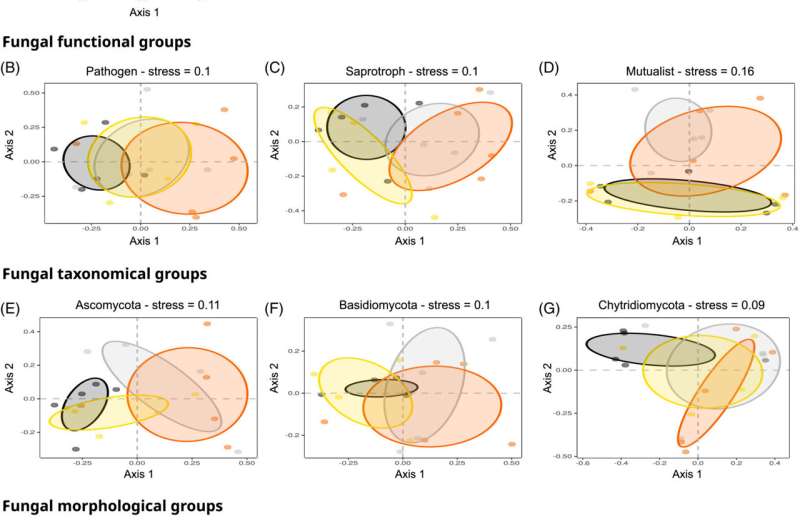Research finds microplastics affect soil fungi depending on drought conditions

Moisture levels in the soil can impact the effects that microplastic pollution has on soil fungi, according to new research in Environmental Microbiology.
By studying soil samples mixed with microplastics under different conditions, investigators found that when soil is well-watered, toxic chemicals in microplastics can leach into the soil and hinder soil fungal richness. With dry soil, however, the leaching of water-extractable chemicals is less pronounced and therefore less impactful on soil fungal structure.
The researchers also noted that under dry conditions, microplastics help soil hold water for longer, which could help mitigate the effects of drought. Although this could be considered a desirable scenario, these interactions imply complex challenges for land management.
"Microplastics in soil alter soil fungal communities, which negatively affect soil ecosystem functions," said corresponding author Yudi M. Lozano, Ph.D., of Freie Universität Berlin and the Berlin-Brandenburg Institute of Advanced Biodiversity Research, in Germany.
More information: Y. M. Lozano et al, Microplastic fibres affect soil fungal communities depending on drought conditions with consequences for ecosystem functions, Environmental Microbiology (2024).
Journal information: Environmental Microbiology
Provided by Wiley


















